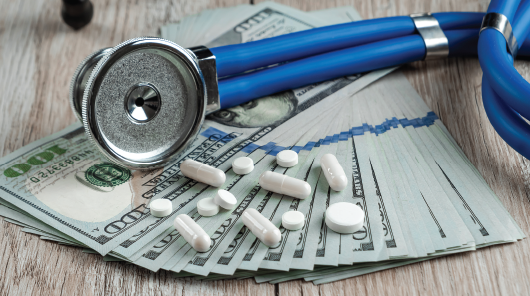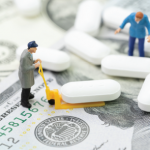
Marko Aliaksandr / shutterstock.com
The cards sat, untouched, in a corner of my desk.
In the 1800s, it was common for American saloons to provide patrons with a free meal. Of course, the meal came with a catch: The meals were predictably salt laden and designed to encourage patrons to drink more beer. Hence was born the expression, “There ain’t no such thing as a free lunch,” which has been called the foundation of economic theory.1
To paraphrase journalist Molly Ivins, I’m sure it sounded better in the original Korean.2 My parents may not have used these exact words, but the sentiment was woven into my childhood, just like it was for many children of immigrants: Study hard. Think ahead. And, of course, don’t expect any handouts.
And that is why the cards sat in a corner of my desk. Illogically, I couldn’t bring myself to throw them out; they were made out of the same shiny material that my insurance company uses to make identification cards, and they came with a professional-looking cardboard container, which was obviously intended to be used to display the cards in my office for my patients to pick up. I just couldn’t bring myself to put them out.
The cards came from GoodRx.
They are not a new company, by any means. The instructions are simple: Bring one of their cards to the pharmacy the next time you need to pick up a prescription. The pharmacist will run the numbers on the back of the card and provide you with a discount. You don’t have to pay a fee. You don’t have to belong to a specific insurer. You don’t even have to register; you can just print the coupons posted on its website.3
That sounds an awful lot like a free lunch.
Honestly, part of the problem was my own laziness. I would have felt just awful if I had given one of my patients a GoodRx card only to find out later that it was a scam of some sort, even if I didn’t quite understand how that could possibly work.
Then I heard the news: GoodRx is for sale. The asking price: $3 billion.4
Clearly, sharper minds than mine see profit in doing good. How does GoodRx work, and more importantly, why is it worth so much?
Doing Well by Doing Good
It started in 2010, when Doug Hirsch tried to pick up a prescription. The pharmacist told him the prescription would cost $450. So Mr. Hirsch did what many of us would have done—he thanked the pharmacist for the information and walked out the door. Quickly. He walked to a second pharmacy, whose salesperson told him it would cost $300. A third pharmacy offered to match the price offered by any other pharmacy.
Mr. Hirsch said, “For me this was eye-opening. I just figured it was a person in a white coat and they came up with the price. To learn there was a competitive market blew my mind.”5
It also blew his mind that this information was not easily available on the web. In a world in which you can find anything on Google, the prices of drugs remained mysteriously out of reach. The only reliable way to find out how much any given pharmacy might charge for any given drug was to walk into their store and ask.
If this had happened to any of us—and I’m sure it has—that is largely where the story would have ended. A few irritated can-you-believe emails later, we would have coughed up the money, and moved on with our lives.
Doug Hirsch, however, had a particular set of skills. As a former employee of Facebook and Yahoo!, he and two colleagues started GoodRx to allow consumers to comparison shop for medications.
If you go to the GoodRx website and search for hydroxychloroquine, for example, you will see the average cost of a month’s supply is around $200. But the over-under on this average cost is enormous. One popular retail pharmacy would charge you $277. Another pharmacy would charge you $6, almost 50-fold less.6



